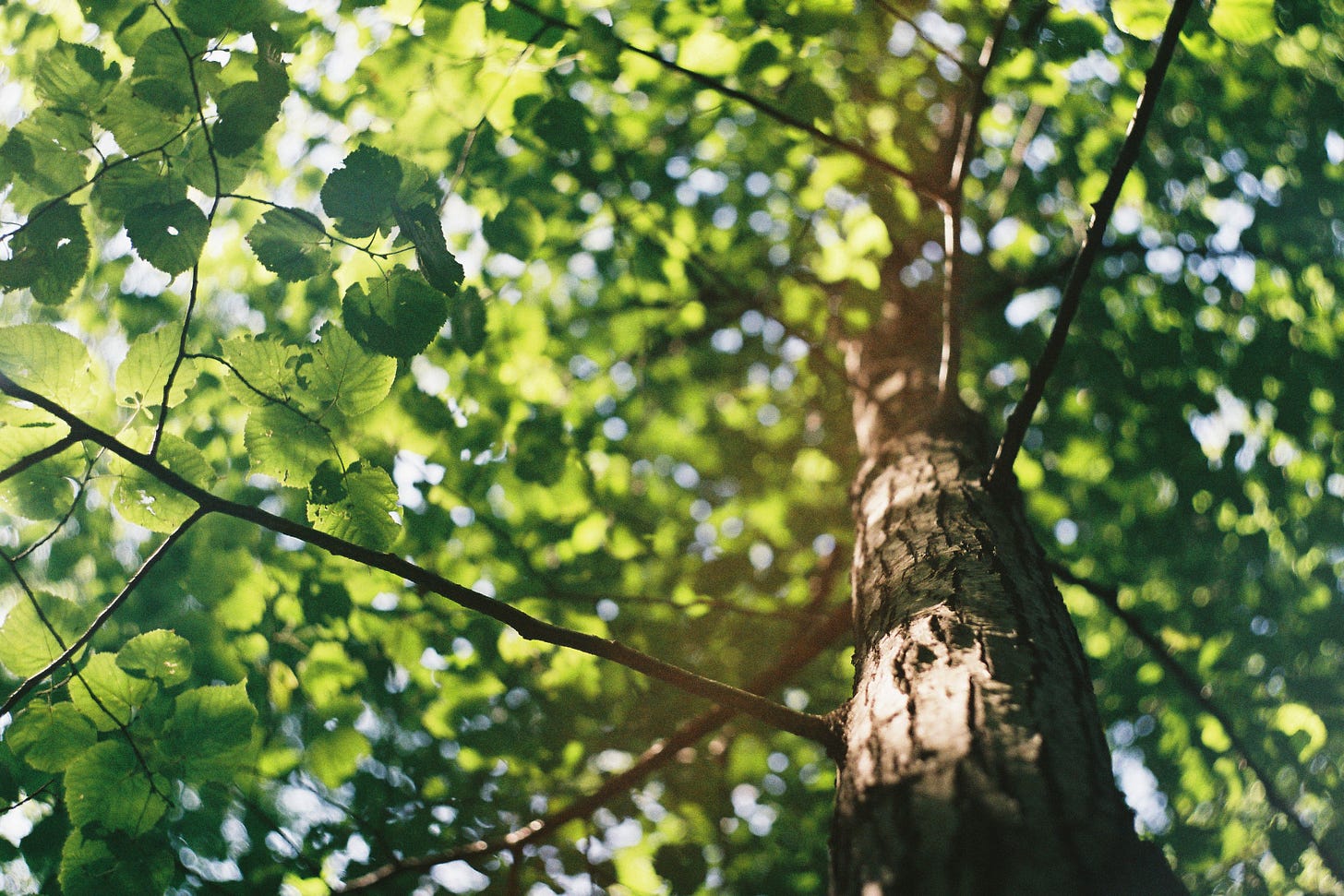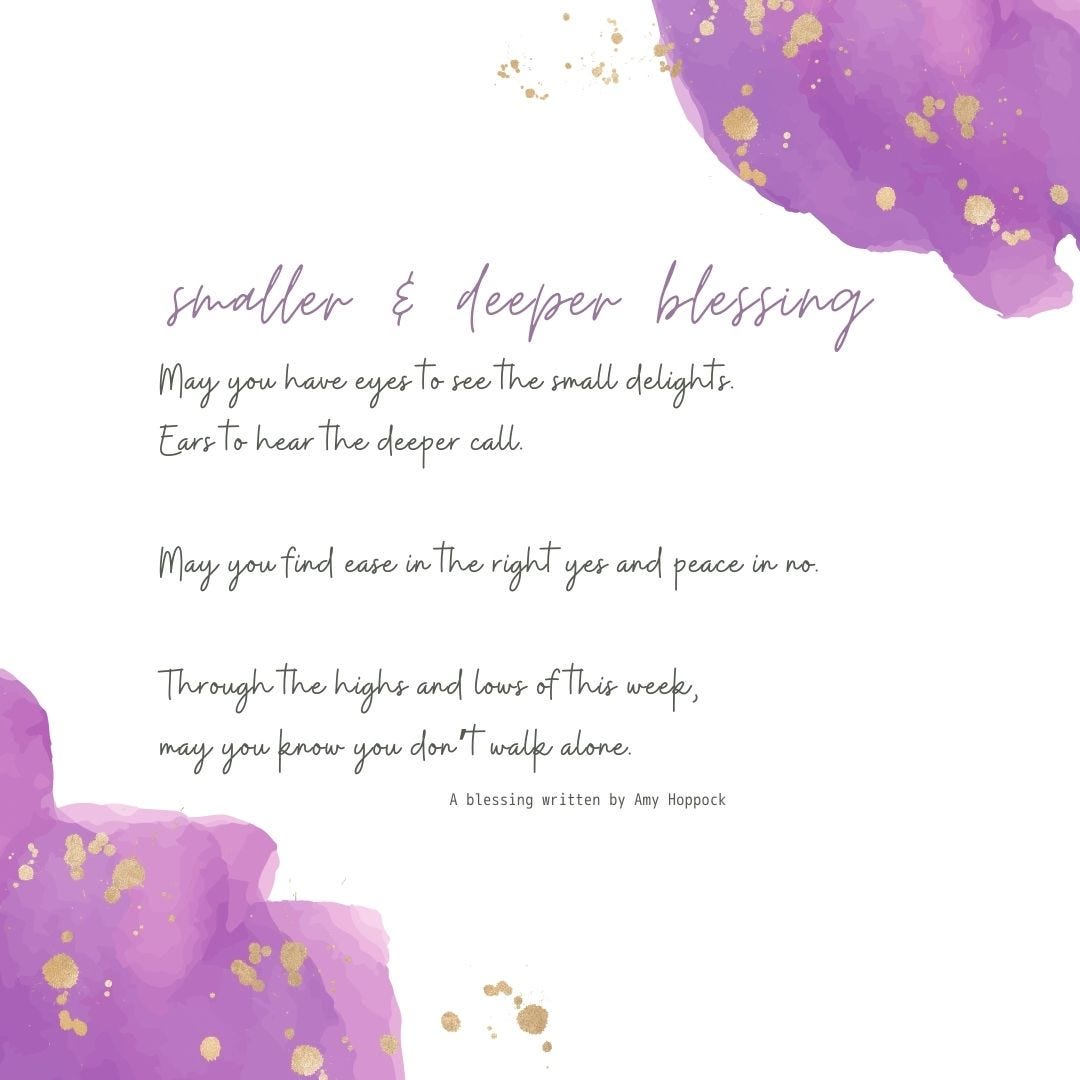"Revisiting the same poem every day is the antithesis of the attention economy: instead of scrolling along the surface, I'm diving deep beneath it."
-Elliot Holt
Sometimes it's hard to know what to write. Being a human on the planet is tough. What is the solution? Where is the antidote? I still maintain it's found in the small and cultivating the deeper. Smaller and deeper is the invitation to find joy in small delights. To make peace with small ideas, small actions, small ideas and know that small kind actions, ideas, and choices add up. Deeper is to center down, ask more questions, not be satisfied with easy answers, but be willing to be challenged by complexity and shades of gray.
I read an article that feels like an invitation. It's a deeper practice. The article's author selects a poem at the beginning of every month and reads it aloud every day.
That's it.
Select a poem.
Read it every day for 30 days.
Diving deep beneath the surface, it does feel so contrary, so provocative, so edgy. Why stay with one poem when we could skim over 35 poems with just one quick Google search? Between FOMO (the Fear Of Missing Out) and the ease with which information is literally in our hands 67% of the day. It IS edgy and countercultural to choose one poem and read it over and over and over again. To explore the depths. To see what lies beneath each word, line, and phrase. To see how it unfolds over time and how it changes our seeing. What does happen when we walk with words rather than pass over them in search of the next word?
I've selected When I am Among the Trees by Mary Oliver as my poem for June. I'm going to see what lies deeper among the trees. Will you join me?
Let me know in the comments if you would like to join me. I made a recording of When I am Among the Trees. Press play above to listen.
Read this article: My Secret Weapon Against the Attention Economy
Will you join me in reading When I am Among the Tree? (Let me know in the comments—just click on the title, and it will take you to the webpage and comments!)
You can listen to the recording I made of When I Am Among the Trees to get you started.
When I am Among the Trees
By Mary Oliver
When I am among the trees,
especially the willows and the honey locust,
equally the beech, the oaks, and the pines,
they give off such hints of gladness.
I would almost say that they save me, and daily.
I am so distant from the hope of myself,
in which I have goodness, and discernment,
and never hurry through the world
But walk slowly, and bow often.
Around me the trees stir in their leaves
and call out, "Stay awhile."
the light flows from their branches.
And they call again, "It's simple," they say,
"and you too have come
into the world to do this, to go easy, to be filled
with light, and to shine."
A practice from Praying with Jane Eyre is jotting down phrases that catch my eye as I read in a notebook, one after the other. In the book, she shared about a man who wrote down quotes in a collection and then used the collected quotes as his own sacred, reflective text.
Savor each quote. Let the invitation unfold.
"To counter the speed of our age, we're asked to open our hearts wherever we are. Even though, in the press of the modern world, such softness and openness can be mistaken for being lazy, aimless, and without purpose. But sometimes we need to drift and be aimless in order to disengage the frenzy of civilization and put down our worried agendas, so we can reconnect to the underlying reality that informs everything."
-Mark Nepo
“Whether we can somehow listen in on tree talk is a subject that was recently addressed in the specialized literature. Korean scientists have been tracking older women as they walk through forests and urban areas. The result? When the women were walking in the forest, their blood pressure, their lung capacity, and the elasticity of their arteries improved, whereas an excursion into town showed none of these changes. It's possible that phytoncides have a beneficial effect on our immune systems as well as the trees' health, because they kill germs. Personally, however, I think the swirling cocktail of tree talk is the reason we enjoy being out in the forest so much. At least when we are out in undisturbed forests.
Walkers who visit one of the ancient deciduous preserves in the forest I manage always report that their heart feels lighter and they feel right at home. If they walk instead through coniferous forests, which in Central Europe are mostly planted and are, therefore, more fragile, artificial places, they don't experience such feelings. Possibly it's because in ancient beech forests, fewer "alarm calls" go out, and therefore, most messages exchanged between trees are contented ones, and these messages reach our brains as well, via our noses. I am convinced that we intuitively register the forest's health.”
― Peter Wohlleben, The Hidden Life of Trees: What They Feel, How They Communicate – Discoveries from a Secret World
“Trees are sanctuaries. Whoever knows how to speak to them, whoever knows how to listen to them, can learn the truth.”
― Herman Hesse
And the wind said May you be as strong as the oak, yet flexible as the birch may you stand as tall as the redwood, live gracefully as the willow and may you always bear fruit all your days on this earth.
-Native American Prayer













Share this post